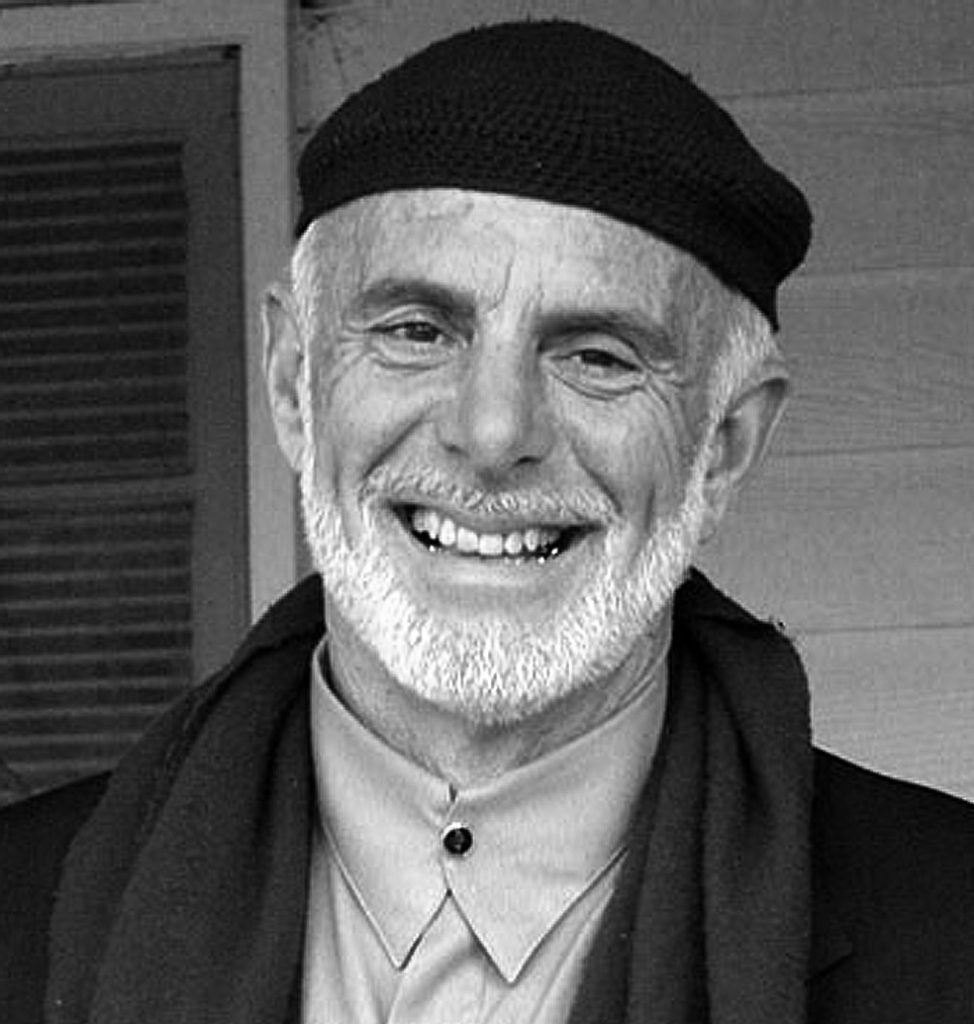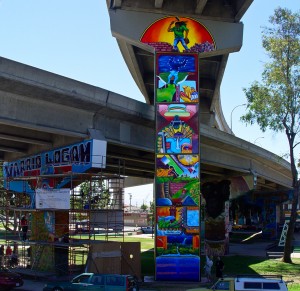
By David Avalos
Michael Schnorr, an inspirational Southwestern College professor, died in San Diego last Friday afternoon, June 29. He was 67.
Heralded as a creator of politically charged murals at Chicano Park, Michael later established himself as a border artist who went on to garner great local, national and international acclaim. With the Border Art Workshop/Taller de Arte Fronterizo (BAW/TAF) his work was exhibited at venues including San Diego’s Museum of Contemporary Art, San Fran-cisco’s Galeria de la Raza, and New York’s Artists Space, as well as at the Havana Biennale, Venice Bien-nale, and Sydney Biennale. For all his global recognition his greatest achievements continue to be most respected and admired within the Chicano community and local border region.
Michael William Schnorr was born in Honolulu on June 19, 1945, to Peter Paul Schnorr, a Pearl Harbor survivor, and Rose A. Schnorr. His younger sister, Judy, recalls their close childhood friendship and time together raising chickens in the back yard of their Chula Vista home. Eight years ago Michael moved back home with his wife, Axa, to care for his aging mother. After their children were born he enjoyed showing his daughter, Xochitl, and her younger brother, Lasha, how to care for their own chickens, how to tend to the world with wonder and joy.
Michael attended Southwestern College in Chula Vista, and later earned a Bachelors degree at San Diego State University, and two Masters degrees in Art History, and Printmaking at Pope Pius XII Institute of Fine Art in Florence, Italy. He also studied fresco restoration at Fortezza de Basso in Florence. In 1971, he was hired by Southwestern College’s Fine Arts Department and eventually promoted to professor.
Michael’s freewheeling creative intelligence, and fearless challenges to the injustices and abuses of power energized those around him. He taught art with a social consciousness encouraging students to think critically and engage the world around them. Michael recently retired after thirty-nine years of teaching. His former students continue to proclaim that he changed their lives and views on art.
Michael’s desire to reach across cultures was irrepressible. In 1978, Victor Ochoa invited him to paint a mural at Chicano Park. Based on a design by his art student, Susan Yamagata, the two created the Coatlicue mural. In 1979 Guillermo Rosette climbed onto the scaffolding of another mural to show Michael a stack of original José Guadalupe Posada prints. Astonished, Michael immediately offered to exhibit them at South-western’s art gallery. With Victor and Guillermo’s open-minded support, Michael was introduced to Chicana/o art activists throughout the state.
In 1984, with Ochoa and others Michael co-founded BAW/TAF at the Centro Cultural de la Raza. In 1995, Michael extended BAW/TAF’s work to Tijuana in support of the residents of Poblado (township) Mac-lovio Rojas. The project continued on into the 21st century. He labored with township members painting murals, building a community center that offered art class-es and tutoring, and hosting residencies for local and international artists. His efforts were supported by numerous grants including an inSite 97 “Community Engagement Project” commission.
Michael and BAW/TAF also went on to create art installations for the Cross Project. This multi-year effort demanded recognition of the thousands of border crossers whose deaths have resulted since the inception of the federal government’s Operation Gatekeeper. He collaborated with the California Legal Assistance Foundation Border Project, Casa del Migrante and other migrant shelters in Tijuana.

Michael’s final art efforts involved the Chicano Park Mural Restoration Project, a plan to revitalize deteriorating Park murals. Last summer his magnificent Undocumented Worker mural was the first to be repainted. Originally completed in 1980, the sixty-foot-high monument calls for the smashing of barriers that deny basic human rights to immigrant laborers. The mural blazes with the unrestrained fancy of Michael’s symbolism.
Michael also participated in the restoration of the mural Voz Libre: Pedro J. Gon-zález. It commemorates the 1930’s Los Angeles Spanish-language radio pioneer and immigrant labor advocate. Originally painted by collaborators Schnorr, Ochoa, Rosette, Yasue Sano and Carlos Esparza in 1983, it has been restored with the help of Todd Stands. Last Friday afternoon by the time Guillermo Rosette called Michael to announce the dismantling of the scaffolding that signaled the mural’s completion Michael was gone.
He is survived by his wife, Axa Negron-Schnorr, daughter Xochitl Abigail, and son Lasha Dhali, his mother Rose A. Schnorr, and his sister Judy Jonte, her husband Jerry and their son Josh. Peter Paul Schnorr, his older brother, died of polio as a child.
Michael Schnorr’s life will be celebrated at Chicano Park on Saturday, July 14 at 1:00 PM. The pubic is invited. Family, friends, artists, colleagues and admirers are encouraged to bring a small item, written word or photograph to be given to his children as a remembrance of how much he is respected, admired and loved.